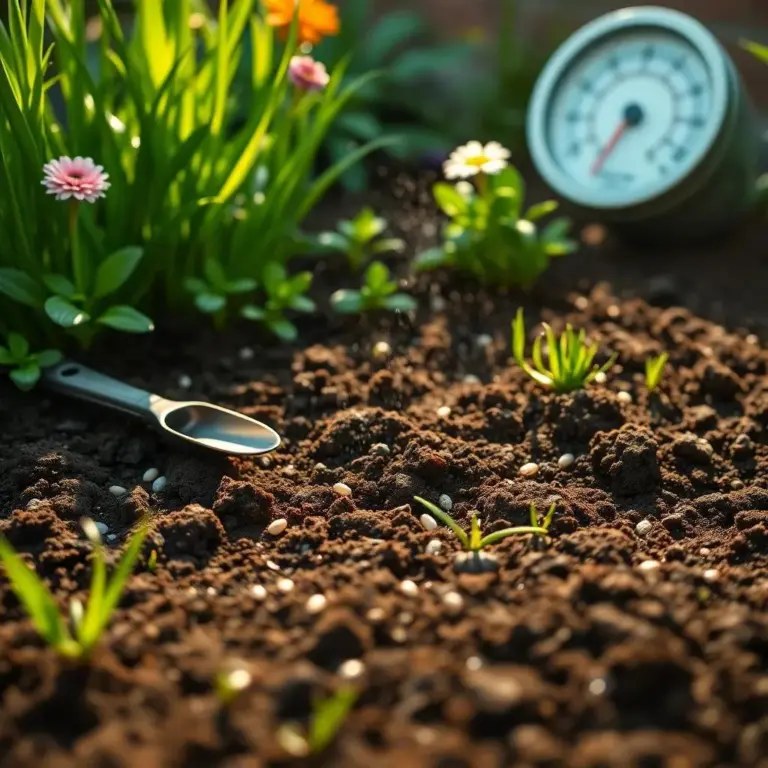Are you ready to turn your patchy yard into a lush, green paradise? Growing grass from seeds can be super rewarding and surprisingly fun! In this guide, I’ll share everything you need to know about grass seed germination, from the perfect conditions to water like a pro. Let’s dig in and get those seeds sprouting!
Understanding Grass Seed Germination Rates
When I think about planting grass seeds, one of the first questions that pops into my mind is, “How long will it take for these little guys to sprout?” And let me tell you, the answer can vary quite a bit! Understanding the germination rates is key to growing a lush, green lawn.
Typically, you can expect most grass seeds to start sprouting within 7 to 21 days. Can you believe that? Here’s a breakdown for you:
- Warm-season grasses: These are the speedy racers! They usually germinate within 7 to 14 days. Think Bermuda and Zoysia grass, which love the heat.
- Cool-season grasses: They take their sweet time, often sprouting in 10 to 21 days. Kentucky bluegrass is a popular choice here, and it generally wants a little more patience!
Every type of grass has its own personality, just like us! Some seeds, especially hybrids, can be a bit picky and may take longer to germinate. But don’t worry; it’s all part of the process. Your job is to give them the best chance possible with the right conditions, and they’ll reward you with a beautiful lawn!
So, why does it take some seeds longer than others? Factors like temperature, moisture, and soil quality play a big role. If you can keep your seeds in an environment that suits them, you could be looking at sprouts sooner than you think! Exciting, right? Just think about how fulfilling it will be to see those little green shoots popping up through the soil!
Factors Influencing Germination Time
Now that we know how long it typically takes for grass seeds to sprout, let’s dive into the factors that can affect this timeline. It’s like preparing for a party—everything needs to come together just right!
- Temperature: Grass seeds are like Goldilocks—they want things “just right.” The ideal temperature for most seeds falls between 60°F and 75°F (15°C – 24°C). If it’s too cold, they may snooze longer, and if it’s too hot, they might not sprout at all!
- Moisture: Think of moisture as the magic potion for germination. Seeds need to be kept moist, but not swimming in water! A gentle misting or light watering can help keep the soil just right. Aim to keep that top inch of soil moist to help those seeds wake up!
- Soil Quality: Believe it or not, the health of your soil can make a difference! If the soil is packed down and hard, your seeds might struggle. Loosening the soil and mixing in some organic matter can create a cozy space for them to grow.
- Sunlight: While seeds don’t need a sunbath to sprout, once they start growing, they’ll need their daily dose of sunlight. Most grasses will thrive with about 6-8 hours of sunlight daily, so keep that in mind!
By knowing these factors, you can create the right environment for your grass seeds! With a little care and attention, you’ll soon see those beautiful blades pushing through the soil. How rewarding is that? It’s like planting a little piece of magic!

Optimal Environmental Conditions for Sprouting
Creating the right environmental conditions is like setting the stage for a fantastic show! If you want your grass seeds to sprout happily and healthily, you’ll need to pay attention to a few key factors. Let’s dive into what those are!
- Temperature: As I mentioned earlier, most grass seeds love a cozy temperature between 60°F and 75°F (15°C – 24°C). It’s kind of like a warm blanket for them! If temperatures drop too low or soar too high, those little seeds might just decide to stay dormant for a while. So keep an eye on the weather!
- Moisture: Think of moisture as the magic elixir for speedy germination. Grass seeds need to be kept moist but not drenched. It’s like finding the perfect balance in your favorite dessert! Regularly mist the soil or use a gentle watering method to keep the top inch moist.
- Sunlight: Sunlight is the icing on the cake! While seeds don’t need direct sunlight to sprout, they do need light once they peek through the soil. Aim for 6-8 hours of sunlight daily for healthy growth. If you have shady spots in your garden, consider using grass varieties that thrive in lower light.
- Soil Quality: Healthy seeds come from healthy soil! Enriching your soil with organic matter, like compost, can work wonders. It helps with moisture retention and provides essential nutrients. A little love goes a long way!
By creating these optimal conditions, you can help your grass seeds grow into a vibrant lawn that you’ll be proud to show off!
Best Practices for Soil Preparation
Now that we’ve set the stage for growth, let’s talk about preparing the soil. Think of soil preparation as giving your seeds a cozy bed to sleep in while they grow. Here are some simple but effective steps to get your soil ready!
- Clear the Area: First things first—clear away any debris, rocks, or old grass. I like to think of it as tidying up before a big dinner party. Using a rake, clean the area so your grass seeds have a smooth canvas to work with.
- Loosen the Soil: Next, it’s time to loosen up! Using a garden fork or tiller, break up the soil to a depth of about 4-6 inches. This makes it easier for roots to penetrate and helps with drainage. Plus, it’s like giving the soil a nice little workout!
- Level the Surface: Grab your rake again and smooth out the soil. You want to avoid bumps and holes because that can affect how the seeds are distributed. A level surface equals even germination, which means a healthier lawn!
- Add Organic Matter: Now, let’s give the soil a nutrient boost! Sprinkle some compost over the top and mix it into the top few inches. This will improve soil quality, help retain moisture, and provide your seeds with the nutrients they need.
- Test and Amend: If you’re feeling adventurous, consider testing your soil’s pH. Grass usually likes a slightly acidic to neutral soil (around 6.0-7.0). If your soil is off-balance, you can add lime to raise the pH or sulfur to lower it.
By following these best practices for soil preparation, you’ll be creating the perfect environment for your grass seeds to thrive!
Watering Techniques for Successful Germination
Let’s talk about a key ingredient in the grass-growing recipe: water! Proper watering is essential to helping those seeds sprout and grow into a beautiful lawn. Here are some effective techniques to get you started!
- Initial Watering: Once you’ve sown your seeds, give the area a good soak. I like to use a gentle spray to moisten the soil without washing away the seeds. Think of it like giving your seeds their first bath!
- Keep It Consistent: During the germination period, keeping the soil consistently moist is crucial. I often set a schedule to water my seeds 2-3 times a day. Just keep an eye on the soil, and if it starts looking dry, it’s time for a drink. Watering in the morning or late afternoon is ideal since it allows the grass to dry out before nightfall.
- Gradual Decrease: As the grass grows and reaches around 2-3 inches, you can gradually reduce watering. It’s like training for a marathon—you wouldn’t want to overwater and drown your little athletes!
- Deep Watering: When your grass starts to establish, water deeply but less frequently. This encourages the roots to dig down deep into the soil, making them stronger and more drought-resistant. A deep soak every few days will do the trick!
- Monitor Moisture Levels: As the growing season continues, be sure to check the moisture in the top 1-2 inches of soil. Adjust your watering depending on the weather and the type of grass you’ve planted.
By following these watering techniques, you’ll provide the ideal hydration for your grass seeds to thrive and grow into a lush, green lawn. Your efforts will surely pay off as you watch your garden come to life!

